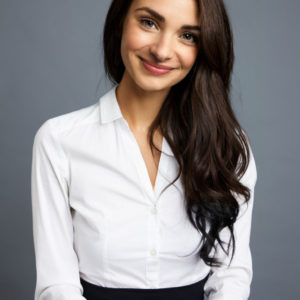Engaged Learners Are Better Learners: How eLearning Automation Can Help
Students like to be in control of their learning. They want to choose what’s interesting and relevant, and to receive support when they need it and independence when they don’t. More importantly, students perform better in situations that consider their learning styles, preferences, and areas of interest.
As the focus on personalizing learning increases, more opportunities have become available for personalization with technology. Learning Management Systems are increasingly offering support for concepts like personal learning paths, and even integrations with third-party systems through tools like Zapier, or even marketing automation tools like Infusionsoft.
Automation is still an emerging concept in eLearning, but you probably already use it to some degree in your existing programs. A simple example is automatically grading quizzes and tests as users complete them. By automating this process, it reduces admin time spent grading and providing feedback, it means learners have immediate feedback, and frankly, this kind of automation is what users expect. Some systems might even automate processes like congratulating users for completing courses or notifying instructors that an assignment was submitted, but it’s with more complex automation workflows that things start to get interesting.
Simple Engagement Strategies Using Automation
Automation includes processes that happen automatically as learners move through eLearning programs. Notifications are simple examples of automation. Notification emails make it easy to let students know about things like expiring course access, deadlines, instructor feedback, and more. Many LMS platforms support this type of automation and notifications are easy to set up while often providing high value.
But automation can do a lot more. We’re starting to see more learning systems integrate with Customer Relationship Management (CRM) software. Integrating a learning platform with CRMs like Active Campaign, Ontraport, and Infusionsoft, for example, makes it easy to create workflow automations based on learner behavior. Maybe, it’s been 3 days since a learner completed the second lesson of a course, and you want to reach out by email to encourage them to move on to the third. Or maybe registration for an online course should trigger an email campaign that introduces the user to the course and sends periodic tips for success. These are easy with CRM tools and help to personalize the learning.
Save Time With Automation
How much time do your instructors spend on routine student interactions like progress checks and feedback based on performance? What about managing user access to courses, reporting, compiling course feedback, etc.? These are all tasks that are easy to automate with the right tools, freeing up instructor time to focus more on course development, personal outreach, and helping more students.
Learning Management Systems do increasingly offer features like group- (or role-) based access management, notifications, and simple automated actions. What used to require proprietary systems with custom development is becoming more normal – and an expected function.
WordPress, the popular open source Content Management System, is noteworthy for having significant support for automation in eLearning and integration with third-party systems. Many learning add-ons ("plugins" in WordPress) now offer Zapier support, allowing learning activities to integrate directly with over 1,000 other apps, including proprietary systems. CRM plugins were also early to market with support for LMS plugins. These tools make it easy to create automations like these in WordPress:
- If a user fails a quiz, send remedial tips in an email.
- When a user passes a course, notify his or her manager and send a completion certificate by email.
- If a user hasn’t taken the next learning step within 7 days, send a reminder email.
The Next Step In Automation: Workflow Recipes
Sending some emails and making access easier is one thing, but where real value emerges with automation is with personal learning paths and integrations. Uncanny Automator is an example of a tool that adds powerful workflow capabilities to WordPress that ties everything together around learning. With it, instructors can create recipes—when something happens, something else happens. When a user fails a quiz, they’re enrolled in a remedial course and removed from the current course. When a user passes a pre-test, the next series of lessons is autocompleted. Moreover, it connects everything together, including eCommerce, live events, social learning, HR systems, xAPI statements, and more. If you can track it, Uncanny Automator can build workflows around it.
Meeting the needs and behaviors of each learner by automatically adjusting your learning program around performance helps to ensure struggling learners receive the support they need and advanced learners aren’t held back. This leads to increased motivation and engagement, which, in turn, results in improved learning outcomes. Can your LMS create personal learning paths that can connect everything associated with your learners? This is an area where WordPress continues to lead the way because of its open architecture and focus on the bigger picture, not solely eLearning.
One additional side benefit of automation tools is that they tend to also add more data points that can help to inform program improvements. When manual activities are replaced with automatic workflows, it tends to also mean those activities are logged. This new data can provide invaluable insight about what really goes on inside self-directed programs and where more focus is needed.
Focus On Value
Automation opens up unlimited opportunities to personalize learning around learner behavior, but it’s important to focus on the value-add as you roll out implementations. As you add more notifications, you add more noise and each email becomes easier to ignore. As you add more complex recipes, users can be confused about what’s happening and frustrated by the lack of human contact.
With well-defined goals and carefully planned workflows, automation can make your learners happier, more engaged, and more productive.









